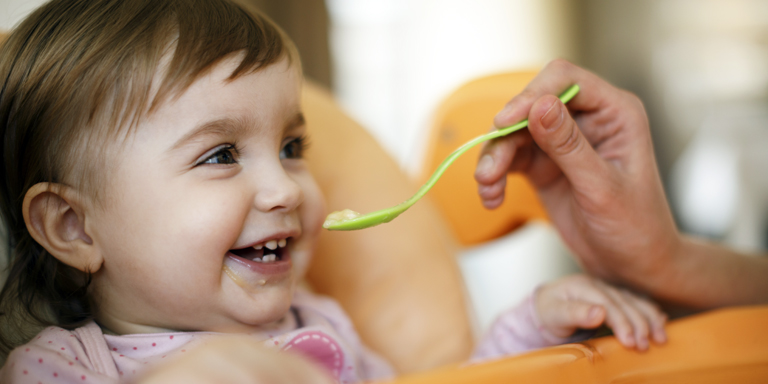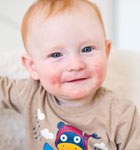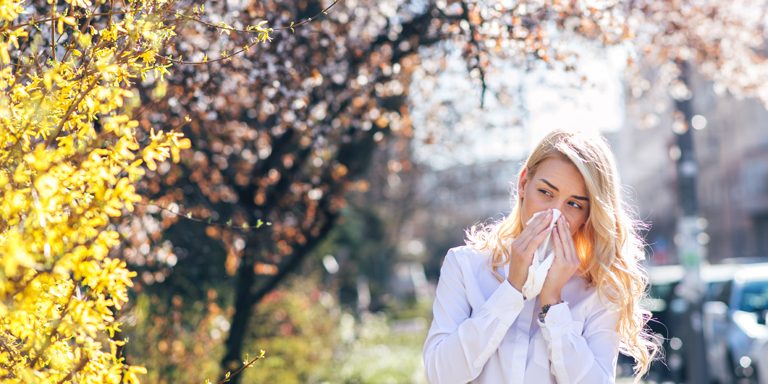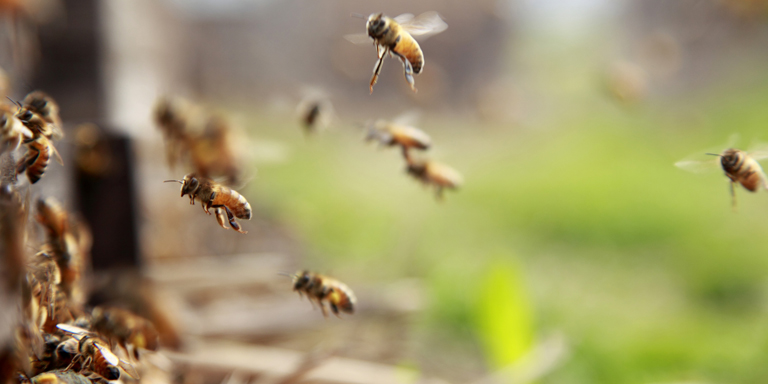Allergy prevention
Allergic diseases are among the most common chronic conditions. A childhood allergy cannot be prevented with certainty. However, some of the factors involved can be influenced. The following recommendations show what families can do to support their children's health.

Table of contents:
Inherited predisposition
Genetic predisposition plays a role: if parents or siblings have allergies, the child’s risk increases. Whether the child actually develops an allergy depends largely on environmental factors, the microbiome and early dietary influences. Preventive measures target precisely these aspects.
Maternal nutrition
A healthy and balanced diet during pregnancy and breastfeeding is important for the mother and the child. Avoiding individual foods does not prevent allergies in the child. Special dietary patterns, such as very fish-rich diets, also show no clear preventive benefit.
Type of birth
The type of birth can influence allergy risk because it helps shape the early composition of the microbiome. Vaginally born children come into contact with the mother's vaginal flora; in a caesarean section, they predominantly come into contact with skin flora.
Children born by caesarean section have an increased risk of asthma, allergic rhinitis, and atopic dermatitis. A link to food allergies, however, has not been clearly demonstrated.
Breastfeeding
Breastfeeding offers numerous health benefits and continues to be recommended. Its influence on the development of allergies is not clearly proven.
If a mother wishes to exclusively breastfeed, cow milk-based infant formula should – as far as medically possible – be avoided during the first week of life. Studies show this may reduce the risk of an allergy to cow’s milk. If additional nutrition is needed, cow milk-based products should not be given only occasionally but regularly. Studies indicate that precisely sporadic administration may increase the risk of sensitisation, whereas consistent intake supports the development of tolerance.
For infants who are not or only partially breastfed, there is no recommendation either for or against hydrolysed formulas. Soy-based or other animal-based alternatives (e.g. goat, sheep or mare’s milk) are not suitable for allergy prevention.
Infant nutrition (complementary feeding)
Early nutrition plays a key role. It is now known:
Avoiding allergenic foods in infancy does not protect against allergies.
For certain foods, early introduction may even be protective. From the fifth month onwards, the gradual introduction of complementary foods in addition to breastfeeding is recommended.
Egg products
- Ideally introduced between four and six months
- In well-heated form (e.g. muffins, bread, hard-boiled egg)
- Then offered regularly
Peanuts
For families with regular peanut consumption:
- Introduction between four and six months in age-appropriate form (e.g. finely processed peanut butter)
- Then given weekly to maintain the protective effect
Varied diet
A broad variety of foods in the first year of life supports the development of tolerance and can reduce allergy risk. Introduction should be age-appropriate and aligned with the family’s dietary habits to ensure regular intake.
Nutrition in early childhood
From the second year of life onward, children can eat what the whole family eats. A balanced and varied diet is important (see www.kinderandentisch.ch).
Probiotics, prebiotics and supplements
There is currently no recommendation to use probiotics, prebiotics or vitamin supplements for allergy prevention, neither for pregnant or breastfeeding women nor for infants.
Skin care
An intact skin barrier is important for preventing allergic diseases. Children with atopic dermatitis (neurodermatitis) have an increased risk of food allergies, allergic rhinitis and asthma. Early and consistent treatment of the skin condition can reduce this risk.
Skin care products containing food allergens should not be used. Parents should wash their hands before applying creams to avoid skin sensitisation from direct contact with food proteins.
More on the topic of atopic dermatitis (in German)
Antibiotics in early childhood
Antibiotics affect the microbiome. Studies show an increased risk of allergic diseases when antibiotics are used during pregnancy or the first year of life. Antibiotic therapy should therefore be considered with care and used only when medically necessary.
Smoking
If the mother smokes during pregnancy or is exposed to second-hand smoke, the unborn child’s risk of allergies – especially asthma – increases. The risk is further elevated if the child continues to be exposed after birth. Therefore, both mother and father should refrain from smoking during and after pregnancy. Children should grow up in a smoke-free environment.
Pets
The impact of pets on allergy development is a subject of debate. For children and adults with no increased risk of allergy, there is no reason not to have a pet.
However, if there is a family risk of allergy or a child already has atopic dermatitis, no new cat should be acquired. There is no reason not to have a dog.
Pollutants, indoor air and mould
Pollutants such as formaldehyde or volatile organic compounds (VOCs) can increase the risk of allergic diseases, especially asthma. Products such as adhesives, home textiles, or paints should therefore contain low levels of harmful substances.
Important:
- Use low-emission materials
- Ventilate regularly (2–3 times daily, 5–10 minutes)
- Keep humidity below 50%
Vaccinations
Vaccinations do not increase allergy risk. Children – including those with atopic predisposition – are advised to follow the Swiss vaccination schedule (in German).
Body weight
A healthy body weight can reduce asthma risk or severity. A balanced diet and sufficient physical activity are therefore important from early on.
Career choice
For adolescents with elevated risk, career choice can play a role. Certain occupations increase the likelihood of symptoms. An individual assessment by specialists can help identify suitable options.
Editors: aha! Swiss Allergy Centre in co-operation with the Scientific Advisory Board.
Last update of the website content: December 1, 2025




